Chapter 10
Ten Resources to Help with Your Campaign
In This Chapter
![]() Learning from Kickstarter itself and other Kickstarter projects
Learning from Kickstarter itself and other Kickstarter projects
![]() Putting together a budget and a business plan
Putting together a budget and a business plan
![]() Writing clear campaign copy
Writing clear campaign copy
![]() Designing a website for your campaign
Designing a website for your campaign
![]() Taking great photos
Taking great photos
![]() Promoting your project and or a supporting event
Promoting your project and or a supporting event
So far, hopefully, this book has given you lots of ideas and tips for making your Kickstarter campaign a success. There are countless other places you can go for inspiration and guidance. In this chapter, I outline ten additional ways you can boost your campaign by seeking outside information and developing potential skills you need for your Kickstarter campaign.
Finding Kickstarter-Specific Resources
Thanks to Kickstarter’s explosive success, there are now a number of websites specifically developed to help you manage your campaign and reward deliveries. Here are a few of my favorites:
![]() Kicktraq
Kicktraq (www.kicktraq.com): Allows you to monitor your campaign's status and forecasts campaign outcomes. Kicktraq also offers other campaign tips and a regularly updated blog. Figure 10-1 shows a sample tracking and forecast for a Kickstarter campaign in progress, "Take the Plunge."
![]() BackerKit
BackerKit (www.backerkit.com): This new website gives Kickstarter campaign owners the basic tools and tips to deliver rewards to backers. For many Kickstarter campaign owners, failure to deliver rewards has been a big issue. BackerKit is an option if you find yourself overwhelmed with delivery. Figure 10-2 shows the BackerKit site, where you can start learning more about this service.
 BackerKit costs money. If you plan to use it for delivering your rewards, be sure to add the hard cost into your budget.
BackerKit costs money. If you plan to use it for delivering your rewards, be sure to add the hard cost into your budget.
![]() The Kickstarter Tumblr page
The Kickstarter Tumblr page (http://kickstarter.tumblr.com): An ongoing blog written by the team behind Kickstarter with interesting tidbits and notes about ongoing campaigns and successful project tips.
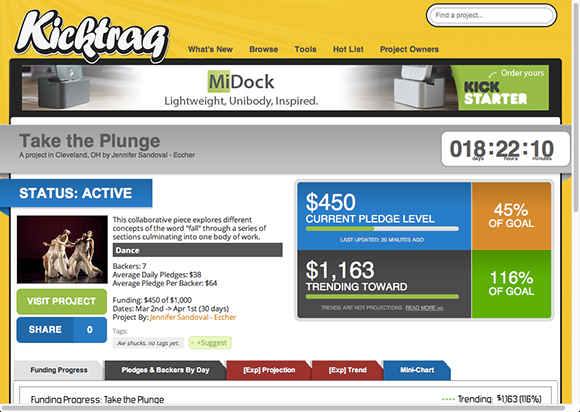
Figure 10-1: Kicktraq page showing progress and likelihood of the “Take the Plunge” project’s success.

Figure 10-2: The BackerKit home page.
Learning from Other Kickstarter Stories
In Chapter 2, I discuss reviewing other Kickstarter’s campaigns as a way to gauge your own potential campaign and get a sense for what others in your potential category are doing. There are a number of great web and news sites where you can also search for keywords like “Kickstarter” and see what others have written about Kickstarter campaigns:
![]() Mashable
Mashable (www.mashable.com): This site frequently has stories about ongoing campaigns and ideas from other users, as well as reporter commentary. Check back often and search "Kickstarter" on the main page for most recent stories, as shown in Figure 10-3.
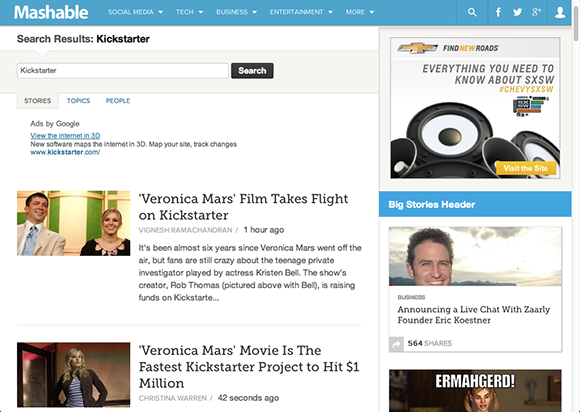
Figure 10-3: Mashable home page with “Kickstarter” search.
![]() The Huffington Post
The Huffington Post (www.huffingtonpost.com): This site often aggregates news from a variety of sources all over the web. As with Mashable.com, simply enter Kickstarter in the search box at the top of the page to see what stories are trending that relate to Kickstarter projects around the country.
Budgeting for Your Project
Chapter 3 reviews the steps in creating a successful Kickstarter campaign budget. In the chapter I recommend using a spreadsheet-type program such as Microsoft Excel. If you are not familiar with how to use spreadsheets, check out the tips for several versions of Excel at Dummies.com. Simply type the version you have (such as Excel 2013) into the search box. Or check out Excel For Dummies by Greg Harvey.
If you don’t have access to Microsoft Excel and don’t want to purchase a copy of the software, there are other, free resources such as the OpenOffice Calc program, that offer the basic spreadsheet functions you’ll need, such as tabulating data and performing basic calculations.
Figure 10-4 shows the OpenOffice.org web page for its Calc program. OpenOffice is actually an entire suite of products that also includes a word processor and a slideshow program.
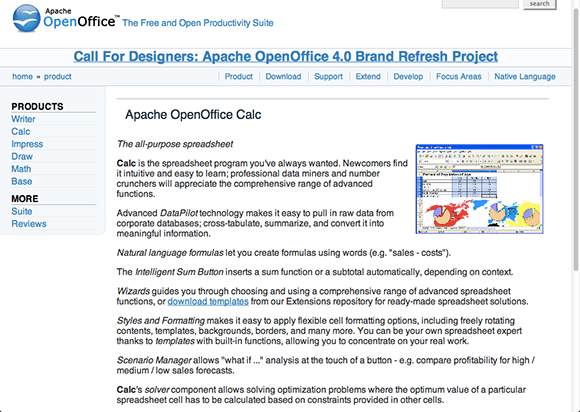
Figure 10-4: Calc is a good alternative to Excel if you need a spreadsheet program.
Making a Business Plan
Remember, Kickstarter is all about getting a project up and running — giving it that proverbial “kick-start.” Just having a successful Kickstarter campaign doesn’t mean your project will actually be successful. It’s up to you to make good use of the support and money from your backers to make your project into a viable venture.
Because each individual campaign and product is inherently different, there is no one-size-fits-all model business plan to follow, but you should create at least a basic business plan that lays out how you will maintain and make money with your project.
Start your web search for business plan resources here:
![]() Dummies.com (
Dummies.com (www.dummies.com): From the home page, do a search for business plan to find articles that can help you determine what to include in your business plan and how to monitor your progress based on your plan. For a more comprehensive guide on how to create and manage a winning business plan, check out Business Plans For Dummies, 3rd Edition, by Paul Tiffany, Steven D. Peterson, and Colin Barrow.
![]() Small Business Administration (
Small Business Administration (www.sba.gov): The SBA is dedicated to helping small businesses succeed, and your Kickstarter campaign is its own small business. This comprehensive website even has a step-by-step free tool for making your own business plan, as shown in Figure 10-5. You can access this free tool by clicking the Starting and Managing tab on the SBA home page and then clicking the Create Your Business Plan heading on the next page.
![]() Bplans (
Bplans (www.bplans.com): This website is designed for a variety of types of businesses, with lots of options when it comes to creating your own business plan. You can also find links here to tools such as LivePlan, which is business plan development software for purchase (as a monthly subscription ranging from $11 – $20), as shown in Figure 10-6.
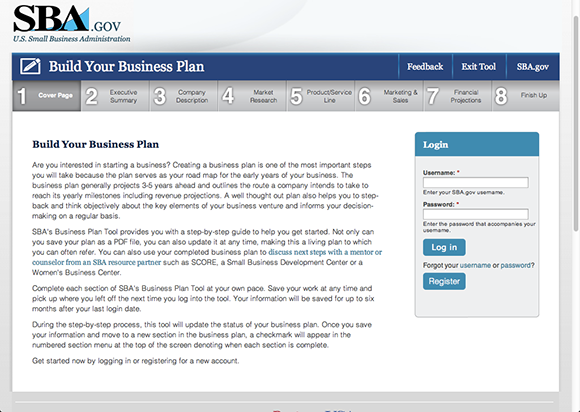
Figure 10-5: The Build Your Business Plan tool on sba.gov.
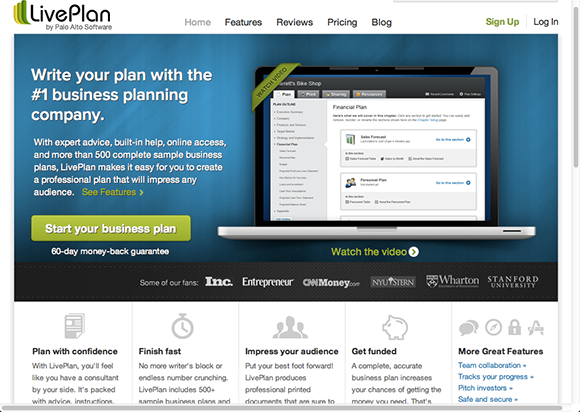
Figure 10-6: LivePlan software available for purchase.
Writing Well
Throughout this book I call attention to the need to tell your Kickstarter story through words and video. If you are not a professional writer — or need some help with basic copy editing — there are several outstanding resources out there.
A classic tool in almost every writer’s toolkit is The Elements of Style by William Strunk Jr. and E. B. White. This pocket-sized but powerful guide explains basic grammar, principles for composing clear and effective prose, and how to avoid misusing or misspelling words and expressions that often trap the unwary. An afternoon spent reading this slim guide can help you improve your writing. The Elements of Style is a gem if you need help with turning your ideas into text or using terms properly. You can often find this book for sale new or used. Figure 10-7 shows used copies available for $3.68 on Amazon.com.
Another tool for writing assistance is an online platform like Wordy (https://wordy.com/copy-editing/), where you can upload your draft and receive feedback and edits from professional editors and copywriters. This can be helpful if you feel stuck in the writing process or are struggling to make transitions between ideas. Wordy is a paid service, so if you are going to use this to help write your Kickstarter descriptions or other materials, be sure to add the cost into your overall budget.

Figure 10-7: The Elements of Style available from only $3.68.
Copywriting Well
Copywriting is writing that’s focused on advertising or publicity. You are copywriting for your campaign page when you write your short blurb or your long description (see Chapter 2) or write text for a website or blog that helps to support your campaign. (See the upcoming section in this chapter for help with a website.)
If you’re daunted by the idea of writing promotional copy for a website — or if you’ve never done a single blog post — several good web-based tools can get you in the swing of it.
Copy Blogger (www.copyblogger.com) is a website created originally by blogger Brian Clark in 2006 to help others struggling with content creation.
The site prides itself on being able to teach anyone how to create “killer content.” This could be extremely helpful to you if you are unsure about what to post in order to attract attention and drive traffic to your project’s campaign page and website.
The Copy Blogger website offers some content for free. Although you have to pay to access its premium services, such as content marketing software and web hosting, these could be worthwhile expenses if you are acquiring skills that will help you grow your backer base. Remember to add any such paid services to your project’s list of hard costs.
Figure 10-8 shows recent posts on the Copy Blogger site, where you are free to browse to get content and copy ideas from others around the web:
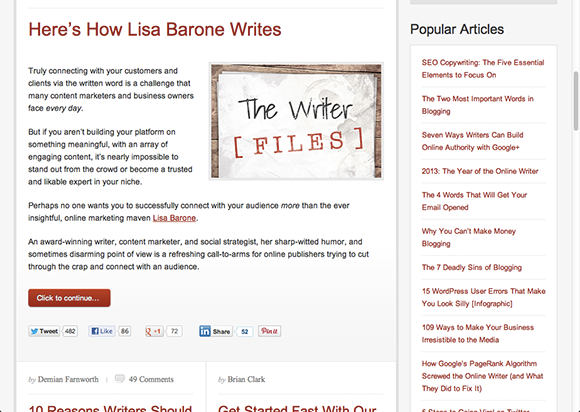
Figure 10-8: Content ideas on the Copy Blogger website.
Another tried-and-true tool for getting started on copywriting (or if you’re already writing but stuck) is a good old-fashioned thesaurus. Of course, as a full-fledged member of the digital age, you might want to check out a few options that don’t require you to crack open a giant volume:
![]() Use the Thesaurus function on your word-processing software. If you find yourself repeating the same word or struggling to communicate your idea, let technology help you! Type in the word you are trying to work around and see what other options pop up.
Use the Thesaurus function on your word-processing software. If you find yourself repeating the same word or struggling to communicate your idea, let technology help you! Type in the word you are trying to work around and see what other options pop up.
![]() If you're a visual thinker, try using a website like the ThinkMap Visual Thesaurus (
If you're a visual thinker, try using a website like the ThinkMap Visual Thesaurus (www.visualthesaurus.com). This type of tool maps out word associations visually. You're directed to a series of possible connected words based on your original search term. You are able to drill not only down, but also around, in all directions, to find the right fit. Figure 10-9 shows the Visual Thesaurus website.
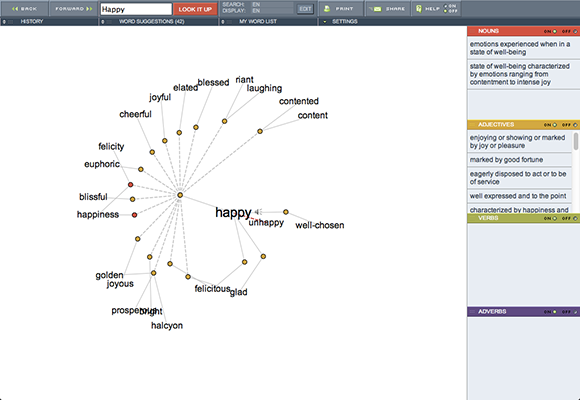
Figure 10-9: The Visual Thesaurus search function.
Writing Press Releases
In Chapters 6 and 8, I talk about getting the word out about your campaign, potentially reaching out to bloggers and writers that might cover your industry or neighborhood.
If you’ve never worked with a reporter before or sent out a press release, the prospect of tooting your own horn might seem a bit overwhelming. It’s really not! Reporters are always looking for good stories and community activities, and if you have created a compelling call to action for your backers, that tells a good chunk of your Kickstarter story right there.
You may want to send press materials to reporters who would be able to write a story in time to benefit your campaign. See Chapter 6 for more details about paying to promote your Kickstarter campaign and making sure you advertise in a vehicle that fits your timeline.
A concise press release that announces your Kickstarter project, funding goal, end date, and relevant links to websites or other content can be a great way to communicate with bloggers and writers.
Three stellar resources are
![]() Public Relations Society of America
Public Relations Society of America (www.prsa.org): Learn about training programs and events that can help you build a press release. PRSA also has a student chapter called PRSSA, also found through the main PRSA website; you may be able to locate a chapter in your town and find a student willing to help you with PR for your campaign to boost his or her résumé.
![]() PRWeb (
PRWeb (www.prweb.com): PRWeb is primarily an online tool for disseminating your press release to a large audience. Although this service might not be a good fit for your project, the site has excellent articles, such as "What is a Press Release?" and "How to Write a Successful Press Release," as shown in Figure 10-10.
 The site even has a free white paper available for download, called “An Expert Guide to Writing Great Online News Releases,” that goes into even more depth.
The site even has a free white paper available for download, called “An Expert Guide to Writing Great Online News Releases,” that goes into even more depth.
![]() AP Stylebook
AP Stylebook (http://apstylebook.com): The Associated Press Stylebook is the Bible for anyone who writes for journalists or the media. A perennial bestseller, this book explains the guidelines for writing in news style, giving your press release a greater chance at getting picked up. The website gives you information on purchasing the most recent version as well as an interactive "Ask the Editor" section that lets you search thousands of queries to zero in on dilemmas of writing style, as shown in Figure 10-11.
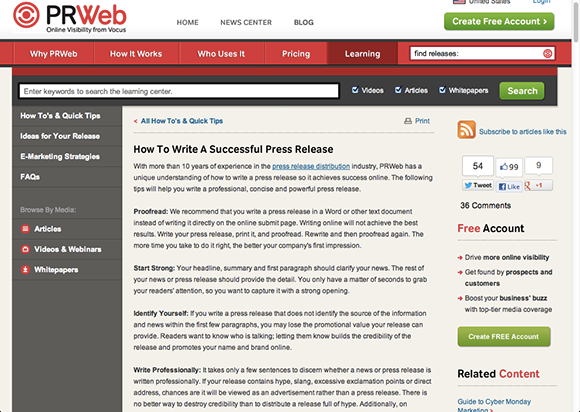
Figure 10-10: Tips and techniques from PRWeb.
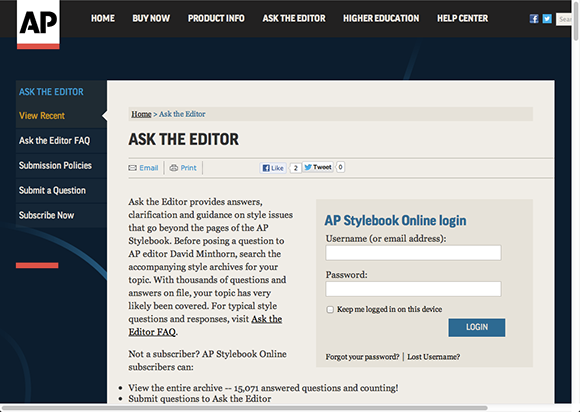
Figure 10-11: “Ask the Editor” feature on AP Stylebook.
Building a Basic Website
In addition to your Kickstarter campaign page, I recommend that you create at least a basic website for your Kickstarter project. Ideally, you have the website up and running before your campaign launches. Even if your site goes live after your campaign begins, you can still use it as a tool to communicate with backers when the campaign is over.
Your project website is a vital tool for connecting with a large number of people at once. Similar to your actual Kickstarter campaign, your project website needs to communicate the basics of your overall idea and passions. Each project is unique, but at the very minimum, you should think about building a site with the following categories of information:
![]() About the project
About the project
![]() Inspiration or background
Inspiration or background
![]() About you
About you
![]() Photos or videos of the project
Photos or videos of the project
![]() Any links to the project in the news or blogs
Any links to the project in the news or blogs
Figure 10-12 shows the website for Creita, a company that creates innovative wire-mesh jewelry that can be molded into a variety of shapes. Creita had a successful Kickstarter campaign, raising funds to participate in fashion shows and events and getting the company on its way to a full production run. Notice how Creita has a website that mimics many of the things required in a good Kickstarter campaign, including strong visuals, videos, a backstory, and press mentions. Note that the site is not particularly complex — and now features a Shop button to allow direct user purchases.
Figure 10-13 is an excellent, straightforward website that mirrors a currently running Kickstarter campaign for “Powered by Green Smoothies.” Filmmaker Sergei Boutenko is hoping to raise $50,000 for a full-length documentary showcasing the health effects of all-green smoothies on a variety of individuals, including athletes. The website hits on several of the key elements, including About, Events, Photos, and Videos. This site is primarily blog-driven, meaning that most of the content comes from the user posting updates and personal comments that highlight the filmmaker’s passion.
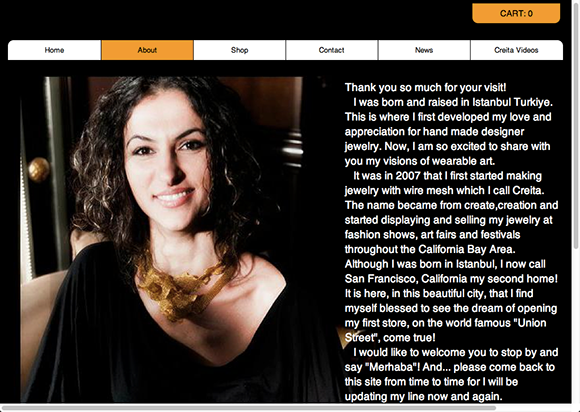
Figure 10-12: Creita website with good examples of basic categories.

Figure 10-13: “Powered by Green Smoothies” filmmaker’s website.
Of course, there are entire books, courses, and even college degrees on website design, but you don’t need to be an expert on website design and maintenance. A basic site can be very helpful for promotion of your Kickstarter campaign.
Thankfully, there are several free or low-cost resources that can handle most of the back-end work and still present a nice basic site to your backers or potential backers. I review two choices in the following sections and outline some options to consider for each.
WordPress.com
WordPress.com is by far the most popular and widely used website for free website creation. This site enables you to choose from different predesigned themes for your site. Each theme offers a different overall look and feel for the finished site. Figure 10-14 shows a small sampling of the available WordPress themes.
Some of the themes are free, meaning you only have to create an account to begin the design process, and others are premium themes, meaning you pay a fee to download and use the features of the theme.
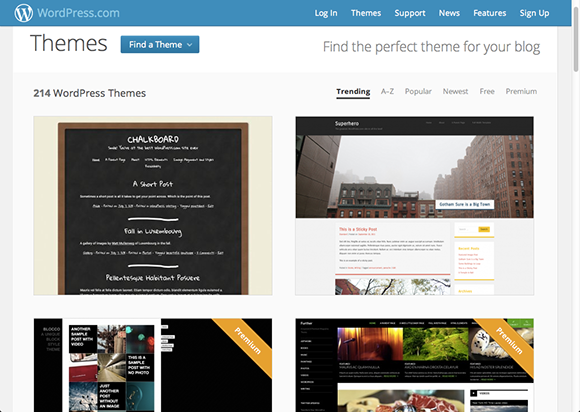
Figure 10-14: Sample WordPress.com themes.
Most of the technology behind WordPress is drag-and-drop, which means you work within a visual interface and don’t have to know HTML or other web-based languages to build a website.
I recommend that you start by reviewing the free themes to get a sense of how WordPress.com works, because these themes are simplest to use. After you feel a bit more confident, try using a Premium theme, which may have advanced features such as
![]() Animated graphics
Animated graphics
![]() Photo sliders or slideshows that constantly update
Photo sliders or slideshows that constantly update
![]() Sidebars or widgets that you can customize
Sidebars or widgets that you can customize
![]() Custom backgrounds or fonts
Custom backgrounds or fonts
![]() Different selections for main posts, aside posts, and callouts
Different selections for main posts, aside posts, and callouts
Figure 10-15 below shows a sample web page using the Avid theme, specifically designed for photo-heavy blogs.
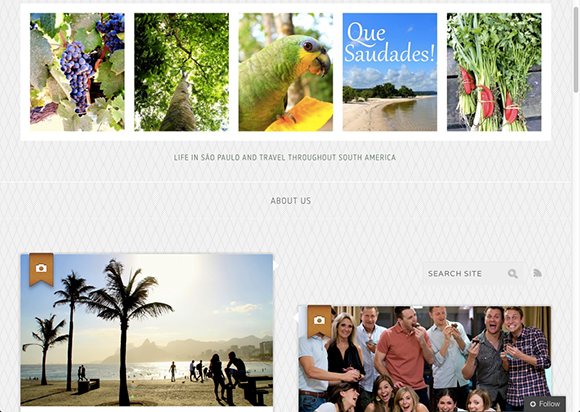
Figure 10-15: Sample blog using Avid WordPress theme.
WordPress.com hosts your website for free, which means the files you create via the visual interface are stored on the WordPress web servers. (Your website files must reside on a web server so that your website visitors’ browsers can access the files when visitors type in your site’s web address.)
When you use WordPress.com to host your site, your default website address (also known as a domain name) is www.wordpress.com/YOURADDRESSHERE.com. You can keep that address or create your own via a process called domain registration. Using the default address is faster and easier than registering your own domain, but I recommend spending the time and money (between $7–$39 per year depending on what you register) creating your own website address. For example, the website I created for my Finding 40 Kickstarter project is www.finding40.net. Having a web address that matches my project name keeps the branding for my project simple and focused and helps people interested in my project find it online.
To use your own domain name with a WordPress.com website, here are the overall steps to follow:
1. Visit a domain name registrar to make sure the name you want is available and follow the registrar’s steps to reserve your desired domain name.
You can register any name you like as long as no one else has taken it. As I mention earlier, you most likely want your domain name to match your project name. The two best-known and least expensive registrars are www.1and1.com and www.GoDaddy.com. WordPress.com also provides a domain registration service through its store. You can also check out providers such as www.name.com and www.namecheap.com for website domain services.
2. After you register your domain, point your WordPress.com blog to your domain.
As this book goes to press, you have to pay about $20 per year to use your own domain name with a WordPress.com blog or website. Click the Store link in your WordPress.com dashboard and follow the instructions to add a domain.
For more details about using WordPress to create a website, check out the WordPress articles at Dummies.com or the book WordPress For Dummies, 5th Edition, by Lisa Sabin-Wilson.
The more advanced you get with a WordPress site, the more you can add in, including a shopping solution (allowing people to buy directly from your site), ticket sales, and other embedded advertisements and commerce opportunities.
Blogger
Blogger is part of Google, and like the name implies, it is mostly designed for creating fairly basic blogs. Go to www.blogger.com and click the button that says Take a Quick Tour to get a basic sense of how this service works.
As with WordPress, you can design a page visually by choosing and customizing themes. You don’t need to know HTML to use Blogger; it’s easy for a novice website creator to use.
Figure 10-16 shows a sample of the Blogger Dashboard.

Figure 10-16: Dashboard inside a Blogger page.
Sites created using Blogger will not have as many theme options available as the hundreds of WordPress themes. Blogger themes are usually simpler and designed for more basic photo sharing and blogging. Of course, there is an entire aftermarket where you can buy or download other Blogger themes and expand the functionality of your Blogspot page — but again, consider how much time and energy you can put into this part of your project, and plan accordingly.
It’s also important to remember that Blogger, as part of Google, may not remain free forever or may change significantly over time; be sure to have a back up plan in place if a free website service should suddenly become unavailable.
Tumblr
This popular blog creation website currently boasts over 100 million users worldwide, including Kickstarter, which uses Tumblr for its own blog mentioned earlier in this chapter. Tumblr (www.tumblr.com) users can create a site also using drag-and-drop technology similar to WordPress and Blogger, and the Tumblr community has better search functions to tag your blog with keywords, making it easier for anyone who just comes to the main Tumblr web page to find your Tumblr page.
There are countless other tools out there for building websites; the list is always changing. To peruse some of the most recent offerings, try a Google search for “Free Web Site Creation” or “Making Your Own Web Site.” You’ll see more choices than you ever thought possible.
Taking Great Photos
As you’ve seen throughout this book, many of the most successful Kickstarter campaigns give backers a real sense of what they’re supporting — often through strong and clear photographs.
Because the Internet is such a visual medium, anything you post as part of your Kickstarter campaign needs to pop off the monitor or tablet and grab the viewer’s attention as much as possible.
![]() Keep your photos as uncluttered as possible, focusing on the Kickstarter item or descriptive point itself.
Keep your photos as uncluttered as possible, focusing on the Kickstarter item or descriptive point itself.
![]() If necessary, use an image editor to crop or otherwise remove elements that take away from your main message. For example, if you took a photo of a building you’re trying to convert to a theater and people in the background detract from the image, think about removing them from the image before posting it to your Kickstarter campaign page or elsewhere.
If necessary, use an image editor to crop or otherwise remove elements that take away from your main message. For example, if you took a photo of a building you’re trying to convert to a theater and people in the background detract from the image, think about removing them from the image before posting it to your Kickstarter campaign page or elsewhere.
![]() Bright, colorful images will pop off the screen; black and white images will meld with text.
Bright, colorful images will pop off the screen; black and white images will meld with text.
![]() When you post the photo of yourself in your profile, pick a photo that really shows your personality and face. If possible, do a head and shoulders shot or simple head shot.
When you post the photo of yourself in your profile, pick a photo that really shows your personality and face. If possible, do a head and shoulders shot or simple head shot.
![]() If you are producing something that will end up being a collection (like the Pebble E-Paper Watch that came in multiple colors), post photographs of each item individually, as well as a group shot so people can see the finished collection.
If you are producing something that will end up being a collection (like the Pebble E-Paper Watch that came in multiple colors), post photographs of each item individually, as well as a group shot so people can see the finished collection.
![]() Remember to lower the resolution before posting! If you take a photo with a digital camera (or even your smartphone) as part of your campaign, each of those individual photos might be a 2MB (or bigger) file. If you upload them directly as-is into your Kickstarter Dashboard, they'll be so large that they'll load sluggishly when someone tries to view them. Use your photo-editing tool to save a lower-resolution version of the image and upload that smaller picture! See
Remember to lower the resolution before posting! If you take a photo with a digital camera (or even your smartphone) as part of your campaign, each of those individual photos might be a 2MB (or bigger) file. If you upload them directly as-is into your Kickstarter Dashboard, they'll be so large that they'll load sluggishly when someone tries to view them. Use your photo-editing tool to save a lower-resolution version of the image and upload that smaller picture! See Dummies.com for tips and articles about saving and optimizing images for the web. Also, be sure to always keep your original high-resolution photo on file; you will need that for any printed materials.
Promoting Your Project or Event
In Chapter 6, I discuss the idea of hosting or participating in a promotional event to get the word out about your Kickstarter campaign and upcoming deadline. There are several tools that can be helpful when promoting an event of this type:
![]()
Eventbrite.com is a catch-all event-listing and planning website, with a huge calendar of events searchable by neighborhood, type of event, date, and cost. Anyone can post details of an event here simply by creating a free Eventbrite account. Eventbrite also lets guests pre-purchase tickets to your event (if you're charging a fee) and shows how many tickets are left if you've limited the number of attendees. Additionally, you can use Eventbrite to e-mail potential attendees and promote your event through an integrated e-mail tool.
![]()
Zvents.com is another free event-listing site, designed to be more of a calendar of events and less of an integrated event-management site. If you're hosting a promotional event to highlight your Kickstarter campaign, this is another opportunity to get the word out and attract attendees. Again, all the events are searchable by neighborhood, date, and category.
![]() You may know of
You may know of Evite.com through birthday party or wedding shower planning, but did you know you can use it also to create a virtual event relating to your Kickstarter deadline? Invite others to join your event and help you reach your goal. Figure 10-17 below shows a sample of the many Evite templates that are appropriate to fundraising.

Figure 10-17: Sample fundraising templates on Evite.
